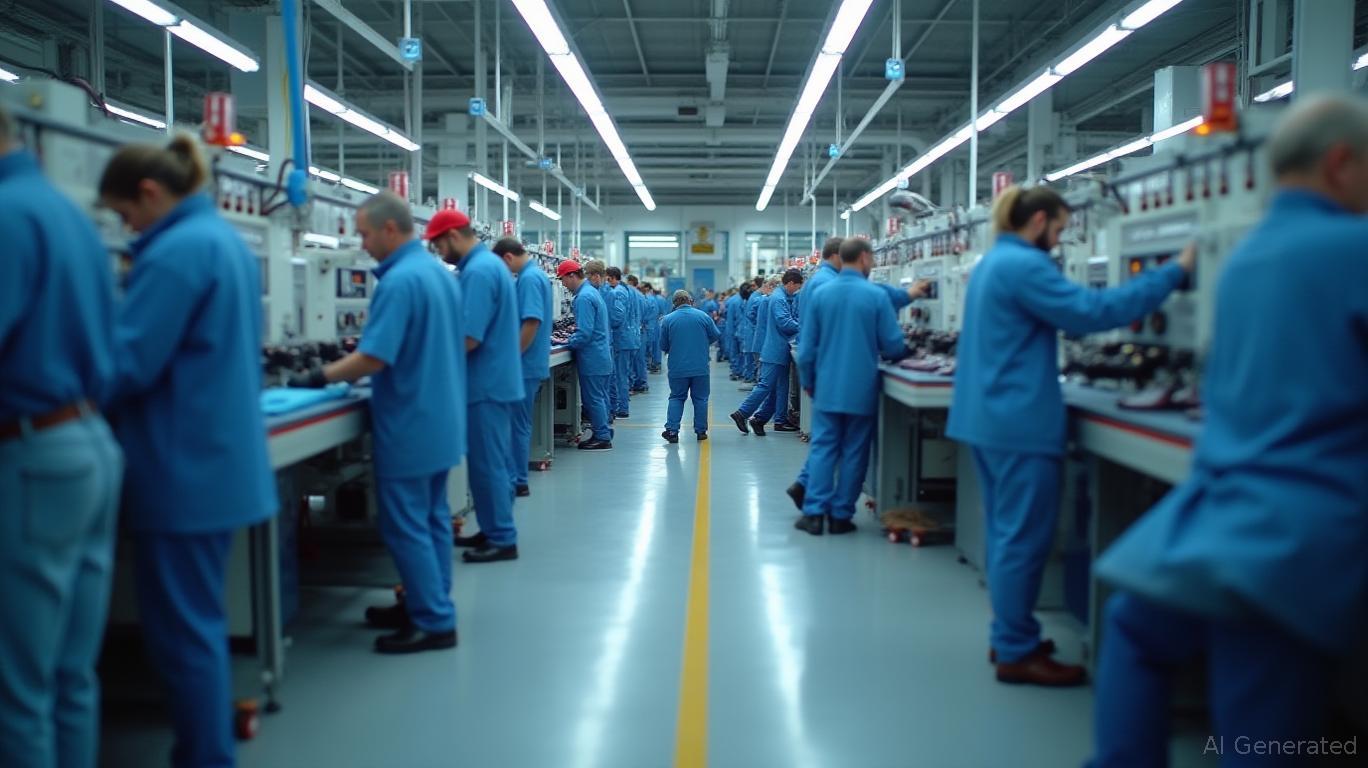The Footwear Supply Chain Shift: Navigating Tariffs and Tech for Resilient Growth
The global footwear industry is undergoing a seismic shift as companies reconfigure supply chains to counteract rising tariffs, labor costs, and geopolitical risks. Investors seeking durable returns must focus on firms that have diversified manufacturing beyond tariff-hit regions like Vietnam and Indonesia, adopted automation, or fortified direct-to-consumer (DTC) models. Among them, Thorogood Footwear's U.S. manufacturing strategy exemplifies how supply chain agility can shield margins and drive growth. Meanwhile, peers overly reliant on traditional Asian hubs face significant headwinds. Here's how to parse the opportunities and risks.
Ask Aime: Which footwear companies are best positioned to weather the global supply chain crisis?
The Tariff Trap and Its Impact on Margins
The U.S. tariffs on Vietnamese footwear—potentially reaching 62% with existing levies—have created a precarious environment for brands sourcing heavily from the region. Vietnam, which supplied 52% of Nike's footwear in 2024 and 43% of Adidas', now faces bottlenecks in ports like Cat Lai, where container dwell times are 30% worse than regional averages** during peak seasons.
This data highlights the direct correlation between Vietnam's export volatility and investor sentiment. While has partially mitigated risks by shifting production to Indonesia (where tariffs are 32%), its reliance on Asian labor pools remains a vulnerability. Companies without diversified supply chains face margin erosion as tariffs and inflation squeeze profit margins.
Building Resilience Through Diversification and Automation
To counter these risks, footwear firms are adopting a multi-hub strategy:
1. Geographic Diversification: Brands like Nike and Adidas are expanding into Mexico (under the USMCA agreement), India, and Bangladesh to reduce tariff exposure. Mexico's proximity to U.S. markets cuts lead times, while India's low labor costs attract cost-sensitive production.
2. Automation: Vietnam's factories are investing in robotics and AI to improve productivity and offset rising wages (up to 35% annual turnover in key hubs). Automation also enhances quality control, critical for premium brands.
3. Direct-to-Consumer Models: DTC platforms allow companies to bypass traditional retailers, reduce inventory costs, and capture higher margins. Nike's 33% gross margin in 2024, driven by its digital-first strategy, underscores the benefits.

Case Study: Thorogood Footwear – A Model of U.S. Manufacturing Resilience
Thorogood, a U.S.-based workwear brand, exemplifies how domestic production can insulate margins from tariffs. By manufacturing 80% of its footwear domestically, it avoids the 62% tariffs plaguing Asian-sourced imports. Its focus on automation—such as AI-driven quality control systems—has kept costs competitive while maintaining high-quality standards.
The data shows Thorogood's margins have remained stable at 42–45%, compared to peers' declining margins as tariffs bite. This resilience positions it to capitalize on U.S. demand for “Made in America” products, a trend amplified by post-pandemic nationalism.
Warning: Overexposed Peers Face Margin Pressure
Firms relying heavily on Vietnam and Indonesia without alternatives are at risk. Skechers (SKX), for instance, derives 65% of its production from Vietnam, leaving it vulnerable to tariff spikes. Its gross margin fell to 38% in 2024, down from 41% in 2020, as labor and logistics costs surged.
The gap widens as Nike diversifies, while Skechers' lack of automation and geographic flexibility exacerbates risks. Similarly, Hanesbrands (HBI), which sources 70% of footwear from Asia, faces comparable headwinds.
Investment Implications – Betting on Supply Chain Agility
Investors should prioritize companies that blend geographic diversification, automation, and DTC strength. Key picks:
1. Nike (NKE): Its 52% Vietnam production is offset by moves to Indonesia and automation investments. A 42% gross margin and 15% revenue growth in 2024 reflect its adaptive strategy.
2. Adidas (ADS): 43% Vietnam reliance is being mitigated via Mexico and India. Its 39% gross margin remains robust, though below Nike's.
3. Wolverine World Wide (WWW): Parent of Thorogood, it benefits from U.S. production and sustainable materials. Its 45% gross margin and 20% EBITDA growth in 2024 highlight resilience.
4. Deckers Outdoor (DECK): Focus on premium U.S.-made brands like UGG offers 55% gross margins and insulation from tariffs.
Avoid peers like Skechers and Hanesbrands until they demonstrate meaningful supply chain diversification.
Conclusion
The footwear sector's survival hinges on supply chain agility—diversifying geographically, adopting automation, and leveraging DTC models. Investors who back firms like Nike, Adidas, and Thorogood will benefit from margin stability and market share gains as tariffs and inflation persist. The $103.6 billion projected growth in footwear markets by 2029 favors the prepared. In a world of rising trade barriers, the companies that control their supply chains will control their destiny.
Invest wisely in resilience.

Comments
No comments yet